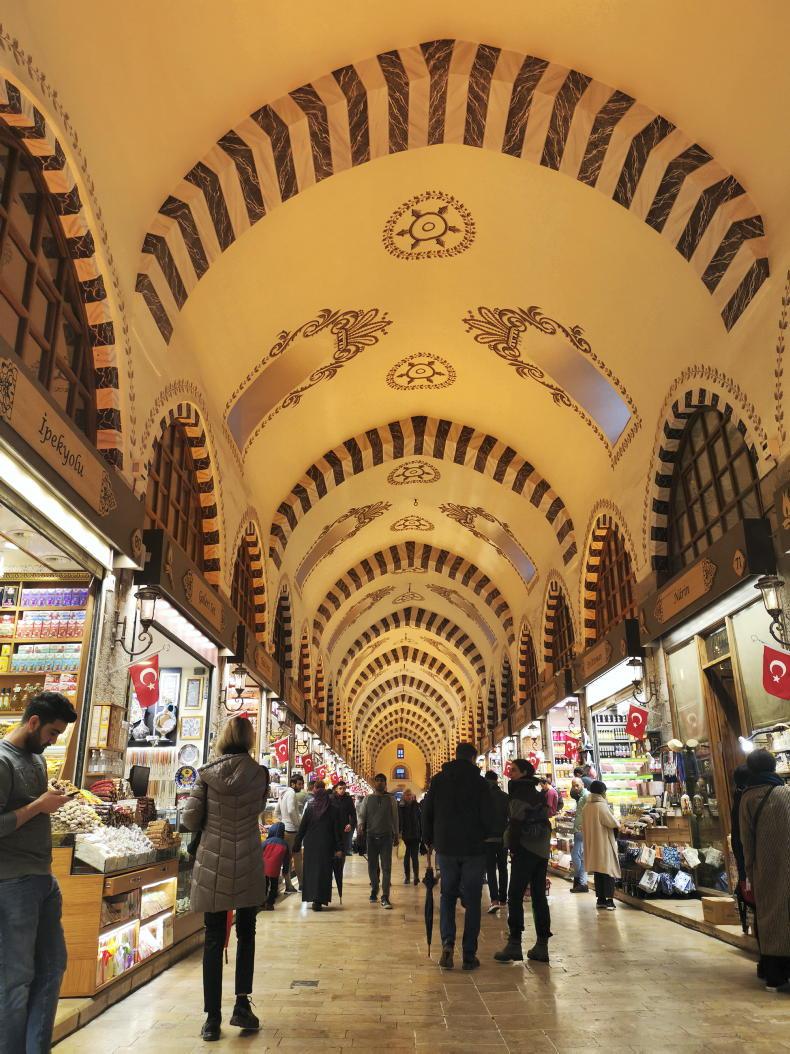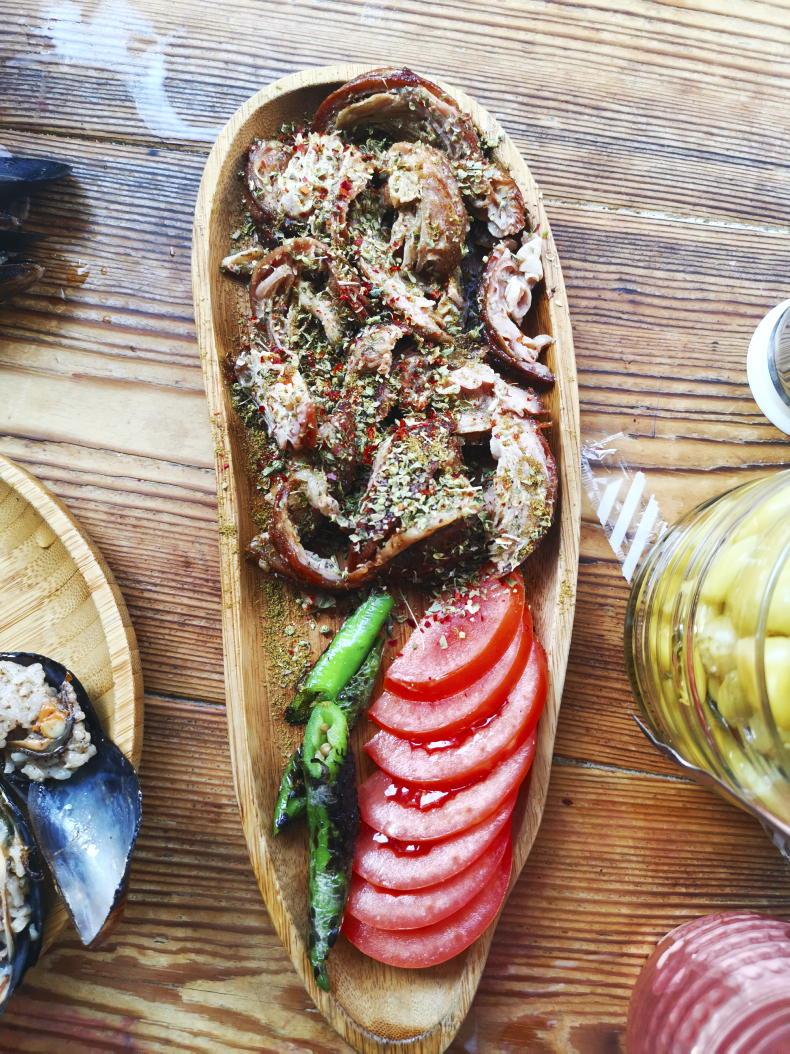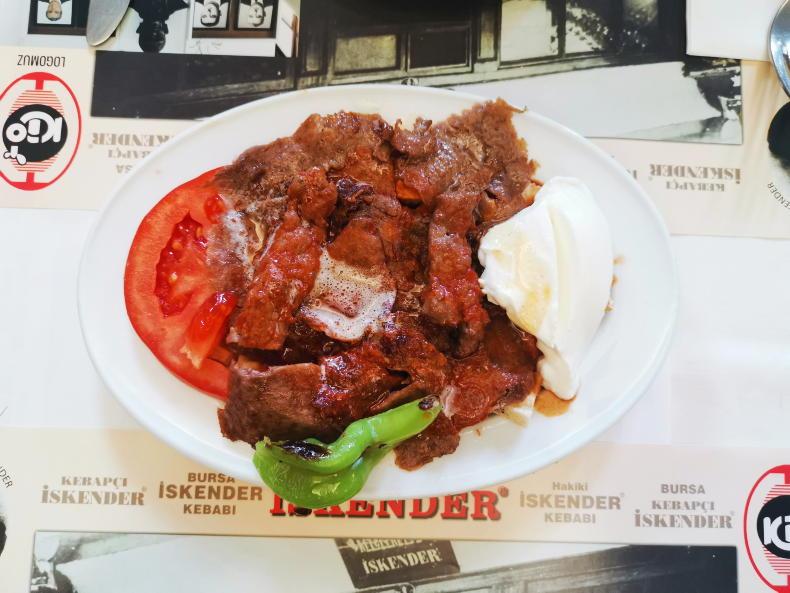Turkey is one of those countries I have always been intrigued to visit and when the opportunity arose to attend a conference in Istanbul, I had my ticket booked post-haste. I knew other people attending the conference, but I was travelling solo and while I had an idea of what it might be like, it exceeded my expectations.
A city break in Istanbul turned out to be a blend of cultures, history, and tantalising cuisine, where east meets west. It is considered European, yet it occupies two different continents: one arm in Europe and the other reaching into Asia.
The two sides of the city are separated by the Bosphorus strait, a 31km-long waterway that connects the Black Sea with the Sea of Marmara, and forms a natural boundary between the two continents.
It is the largest city in Turkey and with over 15 million inhabitants, it is the fifth-largest city in the world by population. As soon as you arrive you are instantly immersed in a bustling city with the sounds of traffic, the call of market traders or street vendors on every street, and the echoing call to prayer that occurs five times a day.

Spice Bazaar, Istanbul, Turkey.
Sightseeing
In Istanbul, ancient history coexists harmoniously with a modern city. Start your journey at the iconic Hagia Sophia, a symbol of architectural brilliance that has served as a cathedral, mosque, and now, a museum. The Byzantine and Ottoman elements create an awe-inspiring atmosphere, showcasing Istanbul’s diverse heritage.
Next, venture to the Blue Mosque, officially known as the Sultan Ahmed Mosque, with its striking blue tiles adorning the interior. The intricate architecture and impressive domes dominate the skyline and can be seen from many points around the city. As you stroll through the historic Sultanahmet Square, you’ll encounter the ancient Egyptian Obelisk and the Serpent Column, relics from the city’s glorious past.
For a taste of Istanbul’s vibrant contemporary scene, head to the trendy neighbourhood of Beyoglu. Explore Istiklal Avenue, a pedestrian street lined with boutiques, cafés, and art galleries. The Galata Tower stands tall in this district, providing panoramic views of the city and the Bosphorus Strait.
The Topkapi Palace Museum, once the residence of Ottoman sultans, is a treasure trove of artifacts, including jewellery, manuscripts, and imperial robes. Wander through the Harem, where the lives of the palace’s inhabitants are brought to life.
To delve deeper into Turkey’s artistic legacy, visit the Istanbul Modern Art Museum. Located along the Bosphorus, this contemporary art haven showcases both local and international talent.
The museum’s striking architecture complements the diverse exhibits, offering a unique perspective on Turkey’s evolving art scene. Quite simply, it’s very cool.
A visit to Istanbul would not be complete without venturing into the Grand Bazaar. With its labyrinthine alleys, this marketplace is filled with the scent of spices, vibrant fabrics, and the sparkle of Turkish carpets. Chat with local shopkeepers, haggle for souvenirs, and absorb the energy that defines this historical market.

Kokoreç, a traditional Turkish dish.
A culinary adventure
Istanbul’s food scene is influenced by both its Mediterranean and Middle Eastern surroundings. It can be a bit overwhelming so my advice is to take a food walking tour. You’ll be able to get local knowledge, recommendations and get your bearings a lot better than wandering aimlessly. Istanbul Walking Tours was my tour of choice and the day started with a street food breakfast and tour of a local market.
Throughout the day, we learned about Istanbul’s food culture, walked around streets and markets, tasted and ate local delicacies, and crossed the waterway on a boat to check out the Asian side of the city. It is a lot of walking, food and information so you definitely need to be committed but it is well worth it.
If you’d rather take things at your own pace, and are looking for an authentic Turkish breakfast experience, head to a local café and enjoy some menemen, a dish of eggs, tomatoes, and green peppers. Don’t forget to try simit, the Turkish sesame seed bagel, paired with creamy feta cheese and olives - definitely one of my culinary highlights of the trip.
Another must-try, but maybe not to everyone’s taste, is kokoreç, a traditional dish consisting of lamb or goat intestines wrapped around seasoned offal, which can include sweetbreads, hearts, lungs, or kidneys. Typically, it is grilled and served with a light side salad. Enjoy with ayran, a tart and frothy salted yoghurt drink.
For a memorable dining experience, embark on a Bosphorus cruise during sunset, where the city’s skyline transforms into a memorable panorama. There is nothing better than a traditional Turkish mezze platter, featuring an array of appetizers such as hummus, tzatziki, and babaganoush, followed by kebabs and fresh seafood.

Spice Market in Istanbul, Turkey.
An Anthony Bourdain recommendation had me wandering down side streets late at night to find what he had described as the best dürüm kebab in Istanbul (a dürüm kebab is a Turkish wrap made from lavash bread filled with döner kebabs ingredients). It was well worth the trip to find Dürümzade (a grill joint on the corner of a busy, bar-lined street). However, one thing I realised while trying to find it is, no matter how friendly a city and safe you feel, perhaps it is best to map out your trips beforehand, so you know where you’re going and how to get back, especially if travelling solo.
A city break to Istanbul is an immersive journey through time, culture, and culinary delights. It has a rich history, captivating sights and welcoming locals, making this a memorable trip.

Iskanders, where the original doner kebab started.
Getting there: Turkish Airlines run on average two direct flights from Dublin airport to Istanbul. Keep an eye out for special offers but expect to pay €250+ return per person. Flight time is 4.5 hours.
Transportation: Istanbul’s extensive public transportation system, including trams and ferries, make it easy to navigate the city. Purchase an Istanbulkart for convenient access to buses, trams, and the metro.
Language: While Turkish is the official language, English is widely spoken in tourist areas. Learning a few basic Turkish phrases will be appreciated by locals.
Attire: Respect local customs by dressing modestly when visiting religious sites. Comfortable walking shoes are essential for exploring Istanbul’s diverse neighbourhoods.
Currency: The Turkish Lira is the official currency. Cards are widely accepted, but it’s advisable to carry some cash for small purchases and for the markets.
Weather: Istanbul experiences diverse weather, from warm summers to chilly winters, but if you’re not able for really hot weather, avoid in the height of summer.
Read more
The 10 best foodie hotspots for your staycation
Ottawa's diverse yet harmonious sights
Turkey is one of those countries I have always been intrigued to visit and when the opportunity arose to attend a conference in Istanbul, I had my ticket booked post-haste. I knew other people attending the conference, but I was travelling solo and while I had an idea of what it might be like, it exceeded my expectations.
A city break in Istanbul turned out to be a blend of cultures, history, and tantalising cuisine, where east meets west. It is considered European, yet it occupies two different continents: one arm in Europe and the other reaching into Asia.
The two sides of the city are separated by the Bosphorus strait, a 31km-long waterway that connects the Black Sea with the Sea of Marmara, and forms a natural boundary between the two continents.
It is the largest city in Turkey and with over 15 million inhabitants, it is the fifth-largest city in the world by population. As soon as you arrive you are instantly immersed in a bustling city with the sounds of traffic, the call of market traders or street vendors on every street, and the echoing call to prayer that occurs five times a day.

Spice Bazaar, Istanbul, Turkey.
Sightseeing
In Istanbul, ancient history coexists harmoniously with a modern city. Start your journey at the iconic Hagia Sophia, a symbol of architectural brilliance that has served as a cathedral, mosque, and now, a museum. The Byzantine and Ottoman elements create an awe-inspiring atmosphere, showcasing Istanbul’s diverse heritage.
Next, venture to the Blue Mosque, officially known as the Sultan Ahmed Mosque, with its striking blue tiles adorning the interior. The intricate architecture and impressive domes dominate the skyline and can be seen from many points around the city. As you stroll through the historic Sultanahmet Square, you’ll encounter the ancient Egyptian Obelisk and the Serpent Column, relics from the city’s glorious past.
For a taste of Istanbul’s vibrant contemporary scene, head to the trendy neighbourhood of Beyoglu. Explore Istiklal Avenue, a pedestrian street lined with boutiques, cafés, and art galleries. The Galata Tower stands tall in this district, providing panoramic views of the city and the Bosphorus Strait.
The Topkapi Palace Museum, once the residence of Ottoman sultans, is a treasure trove of artifacts, including jewellery, manuscripts, and imperial robes. Wander through the Harem, where the lives of the palace’s inhabitants are brought to life.
To delve deeper into Turkey’s artistic legacy, visit the Istanbul Modern Art Museum. Located along the Bosphorus, this contemporary art haven showcases both local and international talent.
The museum’s striking architecture complements the diverse exhibits, offering a unique perspective on Turkey’s evolving art scene. Quite simply, it’s very cool.
A visit to Istanbul would not be complete without venturing into the Grand Bazaar. With its labyrinthine alleys, this marketplace is filled with the scent of spices, vibrant fabrics, and the sparkle of Turkish carpets. Chat with local shopkeepers, haggle for souvenirs, and absorb the energy that defines this historical market.

Kokoreç, a traditional Turkish dish.
A culinary adventure
Istanbul’s food scene is influenced by both its Mediterranean and Middle Eastern surroundings. It can be a bit overwhelming so my advice is to take a food walking tour. You’ll be able to get local knowledge, recommendations and get your bearings a lot better than wandering aimlessly. Istanbul Walking Tours was my tour of choice and the day started with a street food breakfast and tour of a local market.
Throughout the day, we learned about Istanbul’s food culture, walked around streets and markets, tasted and ate local delicacies, and crossed the waterway on a boat to check out the Asian side of the city. It is a lot of walking, food and information so you definitely need to be committed but it is well worth it.
If you’d rather take things at your own pace, and are looking for an authentic Turkish breakfast experience, head to a local café and enjoy some menemen, a dish of eggs, tomatoes, and green peppers. Don’t forget to try simit, the Turkish sesame seed bagel, paired with creamy feta cheese and olives - definitely one of my culinary highlights of the trip.
Another must-try, but maybe not to everyone’s taste, is kokoreç, a traditional dish consisting of lamb or goat intestines wrapped around seasoned offal, which can include sweetbreads, hearts, lungs, or kidneys. Typically, it is grilled and served with a light side salad. Enjoy with ayran, a tart and frothy salted yoghurt drink.
For a memorable dining experience, embark on a Bosphorus cruise during sunset, where the city’s skyline transforms into a memorable panorama. There is nothing better than a traditional Turkish mezze platter, featuring an array of appetizers such as hummus, tzatziki, and babaganoush, followed by kebabs and fresh seafood.

Spice Market in Istanbul, Turkey.
An Anthony Bourdain recommendation had me wandering down side streets late at night to find what he had described as the best dürüm kebab in Istanbul (a dürüm kebab is a Turkish wrap made from lavash bread filled with döner kebabs ingredients). It was well worth the trip to find Dürümzade (a grill joint on the corner of a busy, bar-lined street). However, one thing I realised while trying to find it is, no matter how friendly a city and safe you feel, perhaps it is best to map out your trips beforehand, so you know where you’re going and how to get back, especially if travelling solo.
A city break to Istanbul is an immersive journey through time, culture, and culinary delights. It has a rich history, captivating sights and welcoming locals, making this a memorable trip.

Iskanders, where the original doner kebab started.
Getting there: Turkish Airlines run on average two direct flights from Dublin airport to Istanbul. Keep an eye out for special offers but expect to pay €250+ return per person. Flight time is 4.5 hours.
Transportation: Istanbul’s extensive public transportation system, including trams and ferries, make it easy to navigate the city. Purchase an Istanbulkart for convenient access to buses, trams, and the metro.
Language: While Turkish is the official language, English is widely spoken in tourist areas. Learning a few basic Turkish phrases will be appreciated by locals.
Attire: Respect local customs by dressing modestly when visiting religious sites. Comfortable walking shoes are essential for exploring Istanbul’s diverse neighbourhoods.
Currency: The Turkish Lira is the official currency. Cards are widely accepted, but it’s advisable to carry some cash for small purchases and for the markets.
Weather: Istanbul experiences diverse weather, from warm summers to chilly winters, but if you’re not able for really hot weather, avoid in the height of summer.
Read more
The 10 best foodie hotspots for your staycation
Ottawa's diverse yet harmonious sights










 This is a subscriber-only article
This is a subscriber-only article





SHARING OPTIONS: